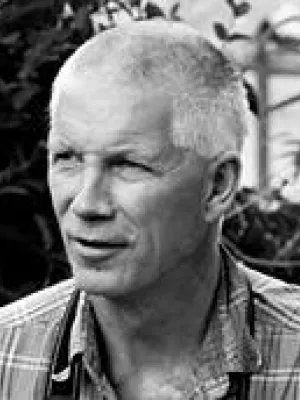
Jonas Ardö
Professor

Dynamics in carbon exchange fluxes for a grazed semi-arid savanna ecosystem in West Africa
Author
Summary, in English
The main aim of this paper is to study land-atmosphere exchange of carbon dioxide (CO2) for semi-arid savanna ecosystems of the Sahel region and its response to climatic and environmental change. A subsidiary aim is to study and quantify the seasonal dynamics in light use efficiency (epsilon) being a key variable in scaling carbon fluxes from ground observations using earth observation data. The net ecosystem exchange of carbon dioxide (NEE) 2010-2013 was measured using the eddy covariance technique at a grazed semi-arid savanna site in Senegal, West Africa. Night-time NEE was not related to temperature, confirming that care should be taken before applying temperature response curves for hot dry semi-arid regions when partitioning NEE into gross primary productivity (GPP) and ecosystem respiration (R-eco). Partitioning was instead done using light response curves. The values of epsilon ranged between 0.02 g carbon (C) MJ(-1) for the dry season and 2.27 g C MJ(-1) for the peak of the rainy season, and its seasonal dynamics was governed by vegetation phenology, photosynthetically active radiation, soil moisture and vapor pressure deficit (VPD). The CO2 exchange fluxes were very high in comparison to other semi-arid savanna sites; half-hourly GPP and R-eco peaked at -43 mu mol CO2 m(-2) s(-1) and 20 mu mol CO2 m(-2) s(-1), and daily GPP and R-eco peaked at -15 g C m(-2) and 12 g C m(-2), respectively. Possible explanations for the high CO2 fluxes are a high fraction of C4 species, alleviated water stress conditions, and a strong grazing pressure that results in compensatory growth and fertilization effects. We also conclude that vegetation phenology, soil moisture, radiation, VPD and temperature were major components in determining the seasonal dynamics of CO2 fluxes. Despite the height of the peak of the growing season CO2 fluxes, the annual C budget (average NEE: -271 g C m(-2)) were similar to that in other semi-arid ecosystems because the short rainy season resulted in a short growing season. Global circulation models project a decrease in rainfall, an increase in temperature and a shorter growing season for the western Sahel region, and the productivity and the sink function of this semi-arid ecosystem may thus be lower in the future. (C) 2015 Elsevier B.V. All rights reserved.
Department/s
- Dept of Physical Geography and Ecosystem Science
- BECC: Biodiversity and Ecosystem services in a Changing Climate
Publishing year
2015
Language
English
Pages
15-24
Publication/Series
Agriculture, Ecosystems & Environment
Volume
205
Full text
Document type
Journal article
Publisher
Elsevier
Topic
- Climate Research
- Environmental Sciences related to Agriculture and Land-use
Keywords
- Net ecosystem exchange
- Gross primary productivity
- Sahel
- Regression
- tree
- Light use efficiency
Status
Published
ISBN/ISSN/Other
- ISSN: 1873-2305

